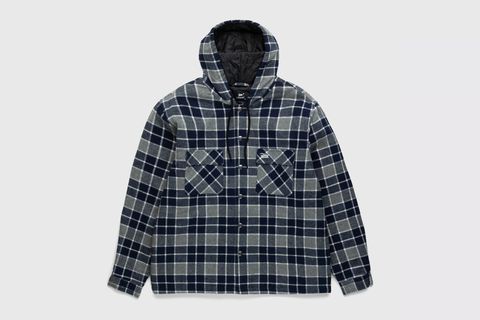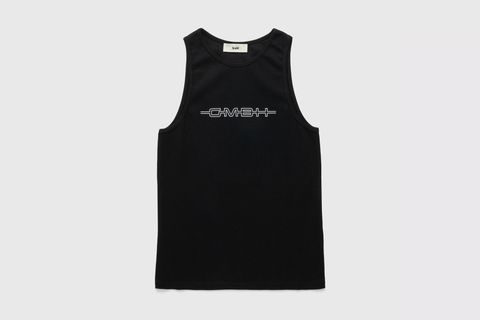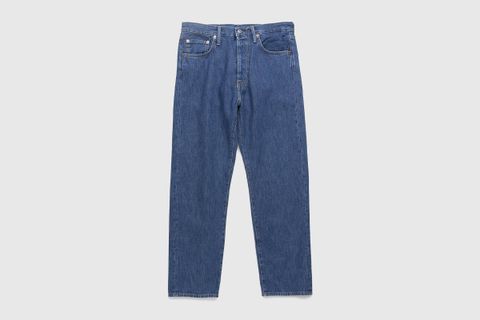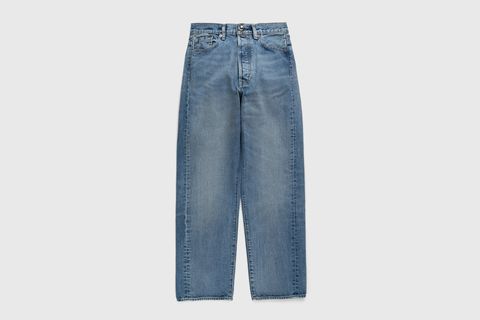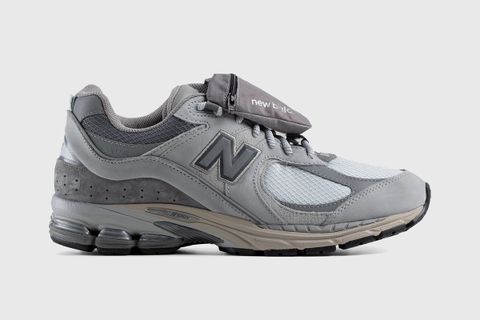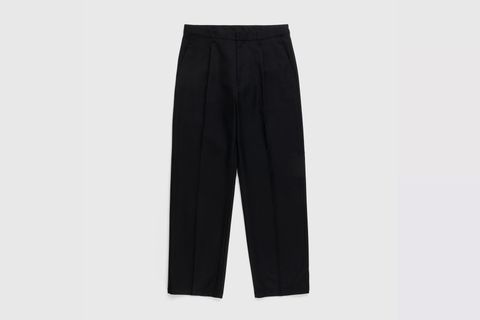Normcore's Influence is Still Alive and Well in 2024
Normcore: it’s that elusive 21st-century buzzword that’s been tossed around with gusto, yet often escapes precise definition. So, what exactly is normcore? How can you tell if something fits this trend, and more importantly, is it still relevant today—or better yet, do we even want it to stick around?
At its core, normcore champions authenticity over pomp. It’s about ditching the flashy for the understated, flipping the script on what’s considered edgy, and embracing a wardrobe that could easily have belonged to Jerry Seinfeld. Yes, it surged as a fashion statement, yet it wasn't immune to becoming the butt of internet jokes.
The narrative of normcore—and its evolution into what some might call "normcore 2.0" in 2024—reflects the era of its inception around 2014. Picture this: Pharrell was making waves with his oversized hat, the Apple Watch was the latest tech marvel, and YG's "My Krazy Life" had everyone trying out the bloodwalk. Ah, those were simpler times.
In this piece, we delve deep into the essence of normcore, tracing its origins and examining how its influence has morphed over the years. From the early days when dropping "normcore" in conversation might have raised eyebrows, to its current state in 2024 where "what is normcore" might just be the question on everyone’s lips. Join us as we unpack the ins and outs of normcore, exploring its lasting impact and what "normcore 2.0" really means in today’s fashion lexicon.
Everything you need to know about normcore in 2024
Where did normcore come from?
Diving into the enigmatic world of normcore, we find ourselves on a bit of a treasure hunt for its true essence. This term, wrapped in layers of irony, hails from the creative minds at K-Hole, a New York-based trend forecasting agency known for its tongue-in-cheek take on the youth culture trends that have brands dropping stacks of cash for insights. Dreamed up by the eclectic squad of Greg Fong, Sean Monahan, Emily Segal, Chris Sherron, and Dena Yago, K-Hole crafted these playfully critical reports. These downloadable PDFs weren't just reports; they were a deep dive into the cultural zeitgeist, dissecting consumer behavior, fashion trends, and the collective identity with a flair that only K-Hole could deliver.
Shop Seinfeld’s Look
Normcore burst onto the scene in K-Hole's debut issue, "Youth Mode," hitting the cultural radar in 2013. With provocatively titled sections like "We live in Mass Indie times," "Being special vs. being free," and the iconic "Thus the cargo shorts," it channeled an unmistakable early Vice energy. Imagine taking the era defined by Zooey Deschanel, the overflow of indie rock, those ubiquitous lensless glasses, and Rookie Mag, then blending it all into a concoction of sublime absurdity. That's the normcore manifesto as introduced by K-Hole, serving as a tongue-in-cheek commentary on the state of fashion and identity.
Under "Normcore," the document reads:
Normcore moves away from a coolness that relies on difference to a post-authenticity coolness that opts into sameness. But instead of appropriating an aestheticized version of the mainstream, it just cops to the situation at hand. To be truly Normcore, you need to understand that there's no such thing as normal.
Normcore fashion started off as a bit of a gag that spiraled way beyond the punchline, becoming a full-on embrace of the everyday and blending in rather than standing out. It's the antithesis to the try-hard vibes of alternative subcultures and the fashion-forward's leap into the boldly unconventional.
Picture the '90s, when Helmut Lang turned sleek minimalism into the must-have aesthetic, dripping with understated luxury and that exclusive club feel. Normcore flips this script, broadcasting the message that being part of the crowd doesn’t mean sacrificing your identity; it redefines it. You don't need the trappings of specialness to find your tribe.
Shop the Normcore Look
Elsewhere, the report reads:
Normcore doesn't want the freedom to become someone. Normcore wants the freedom to be with anyone. You might not understand the rules of football, but you can still get a thrill from the roar of the crowd at the World Cup. In Normcore, one does not pretend to be above the indignity of belonging.
In short, normcore reads like a reaction to the time's growing so-called "hipster" culture, involving putting Polaroid-like filters on early Instagram posts and not liking stuff because it was popular. Normcore, as it came to be understood, was about embracing the banality of plainness, of not being alternative, and of not seeking difference to affirm your individuality.
It is worth mentioning that, prior to K-Hole, the first recorded use of "normcore" was in a 2008 edition of the webcomic Templar AZ by comic artist Ryan Estrada, about a city overrun by people from strange subcultures. In 2014, Estrada penned a Medium article titled "I'm sorry, I accidentally invented Normcore," explaining his role in the normcore original story. The punchline of his comic was the final subculture, normcore, comprising jeans-and-T-shirt-wearers who appropriate what's cool three years too late.
Shop the Steve Jobs Look
Estrada even contacted K-Hole to find out where its writers had first heard the term, only to be told they'd heard it from someone else and concluding that he had indeed invented normcore.
What does normcore look like?
Normcore isn't just about blending into the crowd—it's about doing so with a wink and a nod, sporting a look that's deliberately average yet subtly stylish. Think of it as the fashion equivalent of a Seinfeld episode: all polar fleeces, stonewashed denim, and those unmistakably chunky, comfortable sneakers that scream suburban dad chic. This vibe has been perfectly encapsulated by the resurgence of beefy sneakers like the iconic Nike Air Monarch and virtually every cushy New Balance silhouette, all of which have become synonymous with normcore's laid-back ethos.
Envision the quintessential normcore ensemble: a cozy fleece from Patagonia, The North Face, or Uniqlo casually thrown over a simple tee or sweater. Add to this a pair of effortlessly cool blue jeans in a comfy fit, crisp white sports socks, sleek New Balance sneakers, and, for the finishing touch, a New York Yankees cap (swap it out if you're not a fan). Icons of the normcore realm range from Dev Hynes with his signature baseball caps, Larry David in his norm-defining running shoes and beige slacks, to the legendary Steve Jobs in his minimalist uniform of black turtlenecks, blue jeans, and New Balance 990s.
And let's not forget American Apparel, a brand that, despite its edgy, Vice-esque advertising, played a pivotal role in the lead-up to normcore's mainstream moment. The brand's proudly made-in-the-USA, unbranded basics—tees and hoodies in every color imaginable—became the ultimate non-statement pieces, epitomizing the peak normcore philosophy of embracing simplicity with open arms.
What is normcore in 2024?
When viewed in context as a style trend, normcore felt like a healthy respite from the indie rock-influenced styles of the late '00s and early 2010s, such as bone-crushing spray-on jeans and skull-print Alexander McQueen scarves. The kind of vehemently anti-fashion style that normcore evoked, described by some as "looking like a tourist," eventually led us to Vetements co-founder and creative director of Balenciaga, Demna Gvasalia.
Nothing about Balenciaga is normcore, and it would be a disservice to Gvasalia to suggest as much, but in 2019, the embers of normcore smoldered out in the shape of Eiffel Tower-adorned tailoring, Comic Sans MS on dresses, and tourist tote bags. These items' normcore roots are in their ability to look as pointedly unfashionable as possible and willingness to shun the entire fashion industry. After all, what's more, mundane than Comic Sans?
Normcore is dead. Long live normcore fashion.
